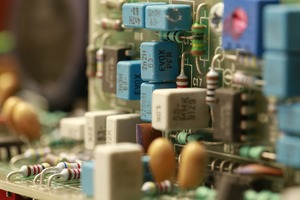The Future of Energy: How Transformer Manufacturers are Leading the Charge
الجسم
As the world pivots towards renewable energy and sustainability, the role of transformer manufacturers has become increasingly critical. These manufacturers are at the forefront of technological innovation, developing advanced transformers that not only support the integration of renewable energy sources but also enhance the overall efficiency and reliability of power systems. This blog post explores how transformer manufacturers are leading the charge in shaping the future of energy.
Integration of Renewable Energy Sources
One of the most significant contributions of transformer manufacturers is their role in integrating renewable energy sources such as solar, wind, and hydroelectric power into the electrical grid. Traditional transformers were not designed to handle the variable and intermittent nature of renewable energy. However, modern transformer manufacturers have developed specialized transformers that can efficiently manage these fluctuations.
Innovations in Transformer Design:
- Smart Transformers: Equipped with sensors and IoT technology, smart transformers provide real-time monitoring and adaptive control, allowing for better management of renewable energy inputs.
- Flexible Transformers: These transformers are designed to handle varying load conditions, making them ideal for integrating renewable energy sources that are not constant.
Enhancing Energy Efficiency
Transformer manufacturers are also focusing on enhancing the energy efficiency of their products. Energy-efficient transformers reduce energy loss during transmission and distribution, which is crucial for minimizing the overall environmental impact.
Advanced Materials:
- Amorphous Metal Cores: These cores significantly reduce core losses compared to traditional silicon steel cores, resulting in more efficient transformers.
- Low-Loss Conductors: The use of advanced materials for windings reduces resistive losses, further enhancing the efficiency of transformers.
Optimized Designs:
- 3D Modeling and Simulation: Advanced computer-aided design (CAD) tools allow manufacturers to optimize transformer designs for maximum efficiency, reducing losses and improving performance.
Embracing Sustainability
Sustainability is a key focus for transformer manufacturers as they strive to reduce the environmental impact of their products and processes.
Eco-Friendly Insulating Fluids:
- Natural Esters: Biodegradable and non-toxic, natural ester fluids are increasingly being used as an alternative to traditional mineral oil for transformer insulation and cooling.
- Recycling Programs: Leading manufacturers have implemented comprehensive recycling programs to recover valuable materials from old transformers, reducing waste and conserving resources.
Compliance and Standards
Adhering to international standards and regulations is essential for transformer manufacturers to ensure their products are safe, reliable, and environmentally friendly. Compliance with standards such as ISO 9001, IEC, and IEEE not only demonstrates a commitment to quality but also ensures that transformers meet the stringent requirements of modern power systems.
Customer-Centric Innovations
Transformer manufacturers are increasingly adopting a customer-centric approach, developing solutions tailored to the specific needs of their clients. This includes providing customized transformer designs, offering comprehensive support and maintenance services, and leveraging digital technologies to enhance customer experience.
Remote Monitoring and Maintenance:
- IoT-Enabled Transformers: Real-time data collection and remote monitoring allow for proactive maintenance, reducing downtime and extending the lifespan of transformers.
- Predictive Analytics: Advanced analytics tools can predict potential issues before they occur, enabling timely interventions and minimizing disruptions.
Conclusion
The future of energy is being shaped by the innovative efforts of transformer manufacturers. Through the integration of renewable energy sources, enhancement of energy efficiency, commitment to sustainability, adherence to international standards, and customer-centric innovations, these manufacturers are leading the charge towards a more sustainable and efficient energy landscape. As the energy sector continues to evolve, the contributions of transformer manufacturers will remain pivotal in achieving global energy goals and addressing the challenges of tomorrow.











تعليقات